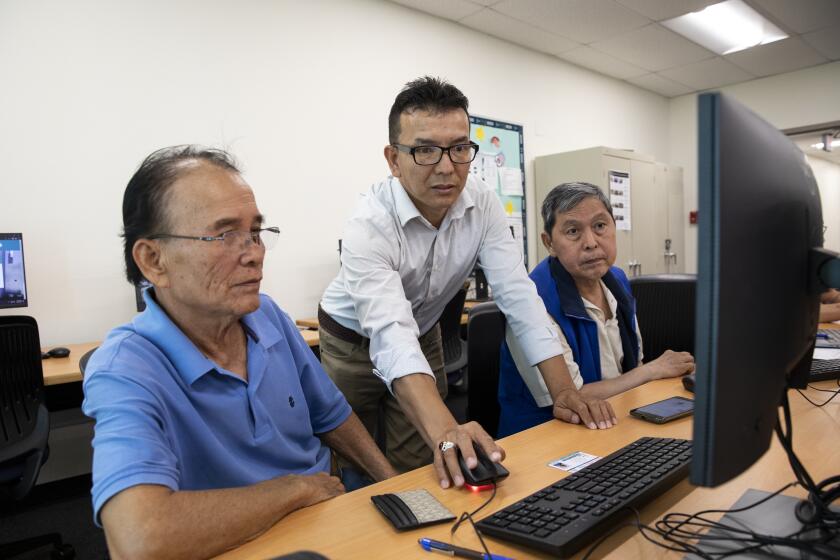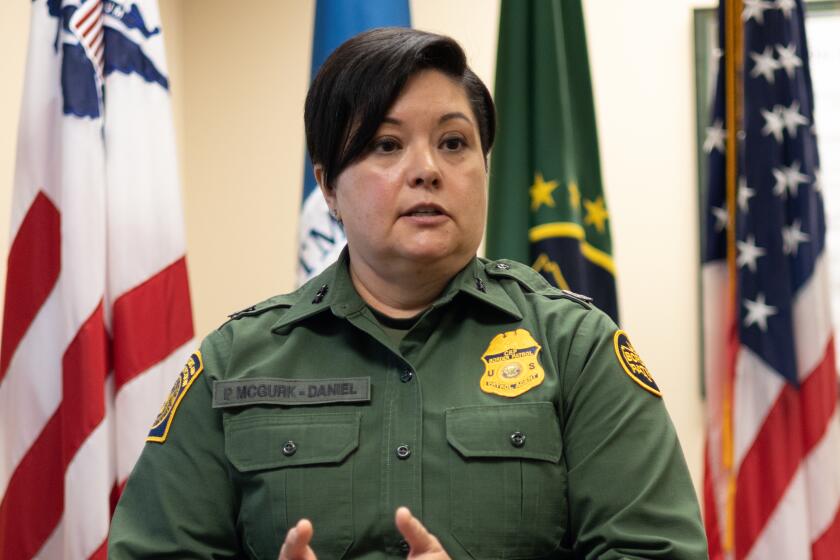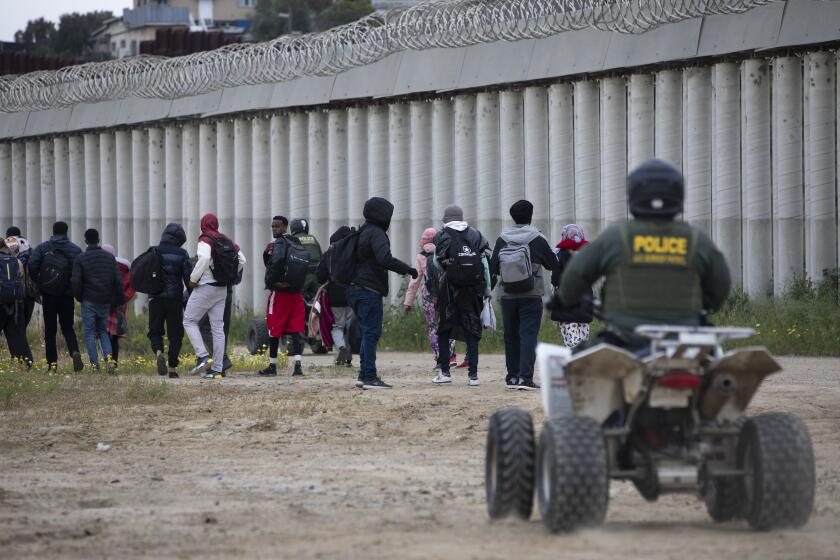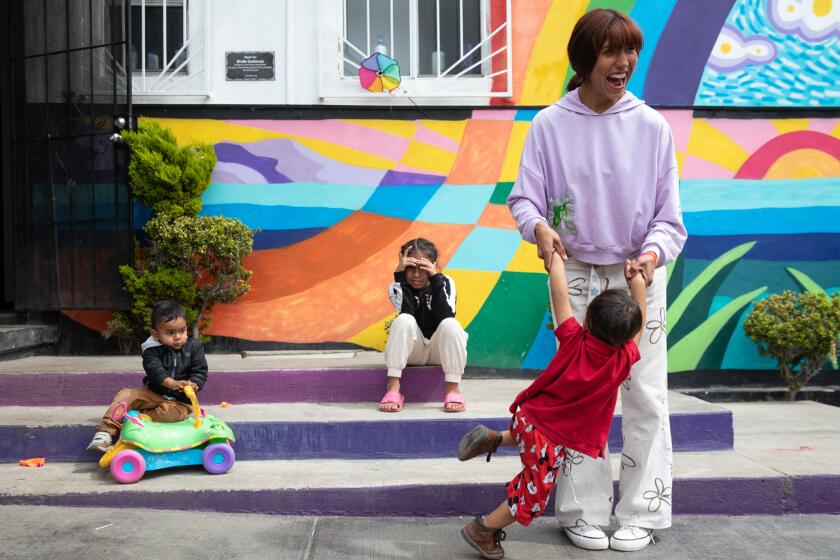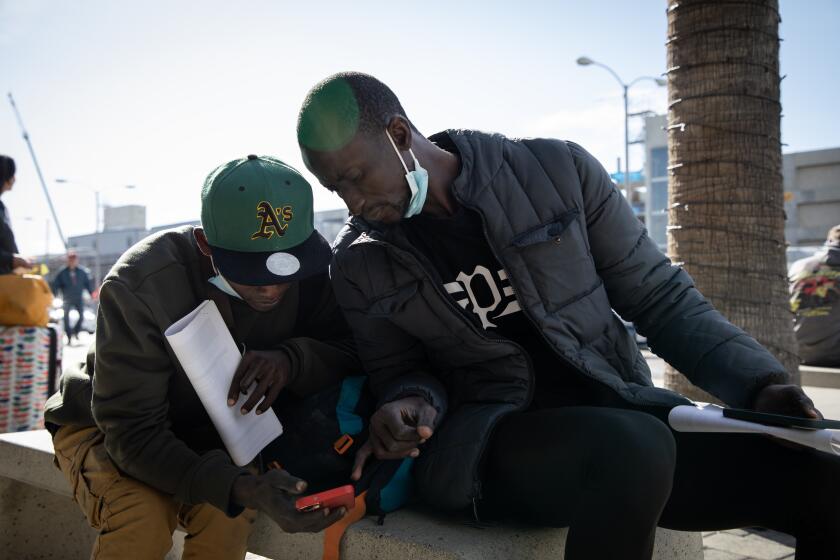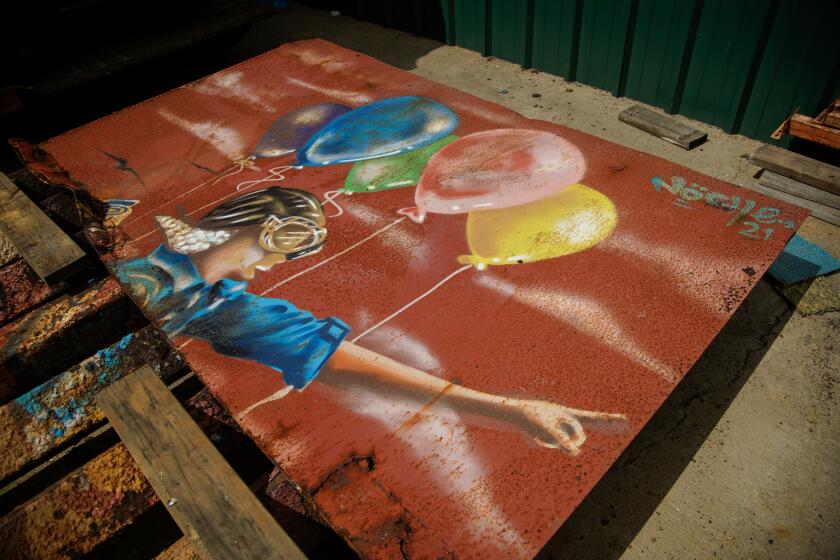Asylum seekers overwhelming US processing in San Diego ports
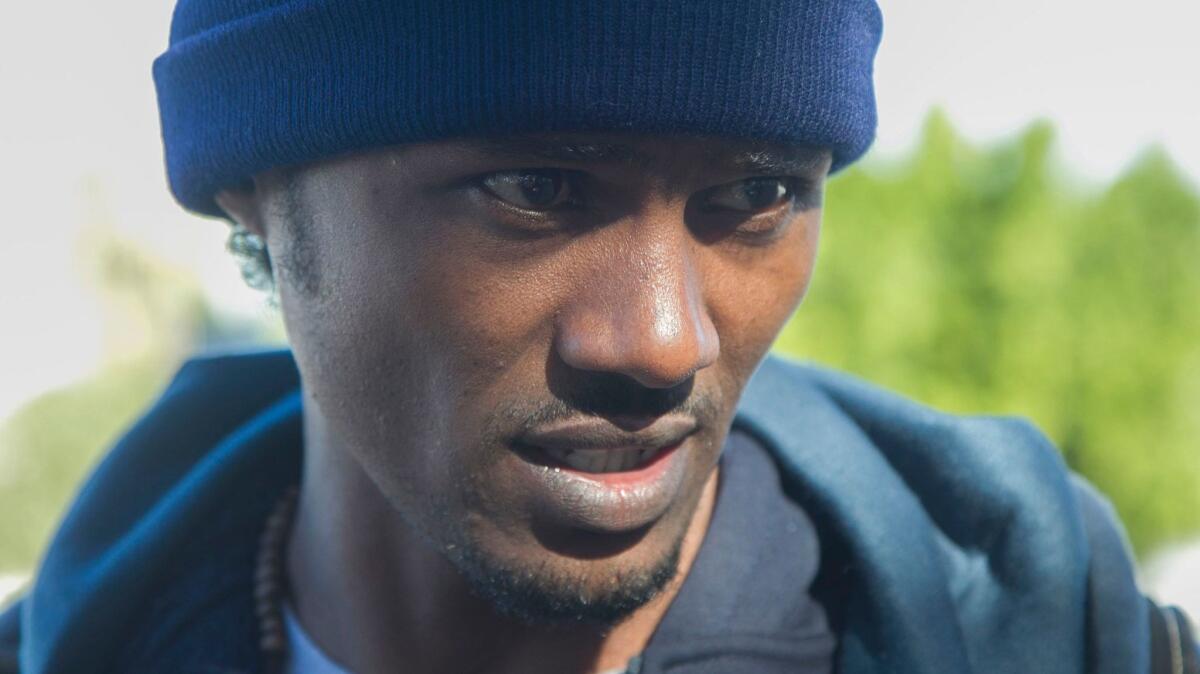
So many people fleeing persecution in their home countries have asked for help in San Ysidro in recent weeks that federal officials have not been able to process all of them, leaving some stranded and running out of money while they wait in Tijuana.
U.S. border officials are trying to work through the backlog, but they can go only as fast as migrants can be processed and moved from temporary holding cells to immigration detention.
An official with U.S. Customs and Border Protection said the agency remains committed to meeting the care and safety needs of people in custody, and is working actively with partners, including Immigration and Customs Enforcement, to resolve the backup.
“There are potentially a number of reasons causing the San Diego area ports of entry to reach capacity; we do not have a definitive reason to offer at this time,” the official added.
Because of the backlog, close to 100 migrants lined up last week in the plaza outside the walkway that leads to PedWest, the pedestrian border crossing that opened earlier this year, Tijuana media outlets reported. Migrants slept in line, afraid of losing their places and having to wait longer for CBP to process them.
Then, Mexican officials told them they couldn’t stay in the plaza.
On Monday of last week, about 25 migrants were jailed overnight for waiting in the plaza outside the port, according to several Eritrean migrants.
In the days since, some found refuge in Tijuana’s migrant shelters, particularly the Casa del Migrante. Each morning, they return to the port to ask if there is room in CBP’s processing area. When they’re turned away, they walk over to a nearby plaza and wait until shelters open for the night.
“We can’t give up. We don’t have option,” said Mesfin Tesfaldet, a 33-year-old man from Eritrea seeking asylum in the U.S., who has been waiting to be processed for at least a week.
He was again shooed out of El Chaparral plaza on Friday along with about a dozen others from Eritrea and Cameroon.
When someone arrives at a port without documents for entry, CBP officials interview that person, take photographs and fingerprints and check law enforcement databases for records. If that person reports being afraid to go back to his or her home country, CBP is required by law to transfer that migrant to other federal agencies for a potential asylum case.
Most of the asylum process happens once the person has been transferred to Immigration and Customs Enforcement — or ICE — custody, and back-ups in that transfer system can leave CBP with limited space in its temporary holding cells at the border. Large groups of migrants arriving at once can also clog the system.
In the fall of 2016, San Diego’s ports were overwhelmed by thousands of Haitian migrants. In partnership with Mexican officials, CBP established a ticketing system that scheduled appointments for migrants to be processed. As of November, the most recent data available from CBP, arrivals hadn’t reached the levels of the wave of arriving Haitians.
In October 2016, more than 6,000 people came to San Diego’s ports of entry asking to come in despite not having documents permitting entry to the U.S. That number included asylum seekers — CBP does not distinguish between those seeking asylum and other “inadmissibles” in its data collection. (In addition to asylum seekers, inadmissibles are those looking for better economic opportunities or anyone else who has asked to enter the U.S. at a port without the proper documents.)
In November 2017, the number of people deemed inadmissible was 2,824, more than double the low of 1,313 reached in March of this year.
Under current policy, asylum seekers are detained by ICE until they get results from credible fear interviews, which determine the likelihood that they will win their cases in immigration court.
If asylum seekers don’t pass the interviews, they are sent back to their home countries. If they do pass, many stay in detention for the remainder of their cases, which can take a year or more to finish. Some are released from detention on parole or by paying bond while they wait for their turns to tell their stories to immigration judges.
Asylum seekers, like refugees, must prove that they’ve been persecuted or fear persecution because of their race, religion, nationality, political opinion or membership in a particular social group.
Tesfaldet said he fled Eritrea to Sudan after he was jailed for his political views. In Sudan, he said, he couldn’t go to a refugee camp because the two governments were working together to send Eritreans back to their home country.
He hid for several years before finding a way to fly to Brazil. From there, he followed a grueling and potentially fatal migrant trail up to Tijuana.
“It was hard. It’s very bad, that jungle. Many people is dying, especially in the river,” Tesfaldet said. “We sacrificed ourselves already. We don’t expect to have a problem when we get here.”
He saw children swept away by the water at river crossings — pulled right out of their mothers’ arms, he said.
He left his 5-year-old daughter in hiding in Sudan while he made the journey because he didn’t want to risk losing her on the way. He hopes that if he is able to win his asylum case in the U.S., he’ll be able to bring her to join him.
He thinks about his daughter every day, he said. He doesn’t care where he lives in the U.S. as long as he is allowed in.
“I want safe. I want peaceful,” Tesfaldet said.
Some of the migrants from African countries expressed frustration that they were the ones left outside after Mexican officials intervened.
“We are human beings,” said one man from Eritrea. “They don’t respect. I’m feeling racism here, a big discrimination here. We don’t want to be here in Mexico. Our target, our way is USA.”
When Tijuana media first reported the line of migrants, many of those interviewed were Mexican asylum seekers fleeing gang violence in other parts of the country. By Friday, most of them did not appear outside the port.
An official from Mexico’s immigration agency told a Mexican media outlet that his agency had asked CBP to find a way to take in more people because of concerns about how migrant children waiting in line could be affected when temperatures drop overnight.
The group of Eritreans and Cameroonians outside El Chaparral on Friday said many of those who didn’t make it into the U.S. had traveled on to Mexicali or even Texas to try at other ports.
Friday afternoon, several of the remaining Eritrean men decided to try their luck in Mexicali as well.
Immigration Videos


When children are separated from their parents at the border, here is where they go next

Prospects of a deal for 'Dreamers' may hinge on separating Trump from hard-liners on his staff

What is DACA?

Border wall prototype contractors selected
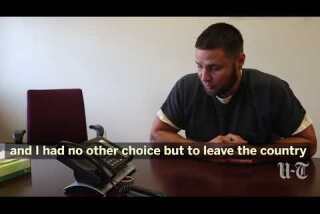
Video: Ukrainian boxer wins asylum in U.S.
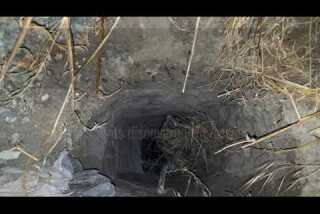
30 apprehended after Border Patrol agents discover tunnel

Video: Kurdish diaspora prepare to vote on independence
Follow me on Facebook for live updates about immigration news
kate.morrissey@sduniontribune.com, @bgirledukate on Twitter
Get Essential San Diego, weekday mornings
Get top headlines from the Union-Tribune in your inbox weekday mornings, including top news, local, sports, business, entertainment and opinion.
You may occasionally receive promotional content from the San Diego Union-Tribune.

